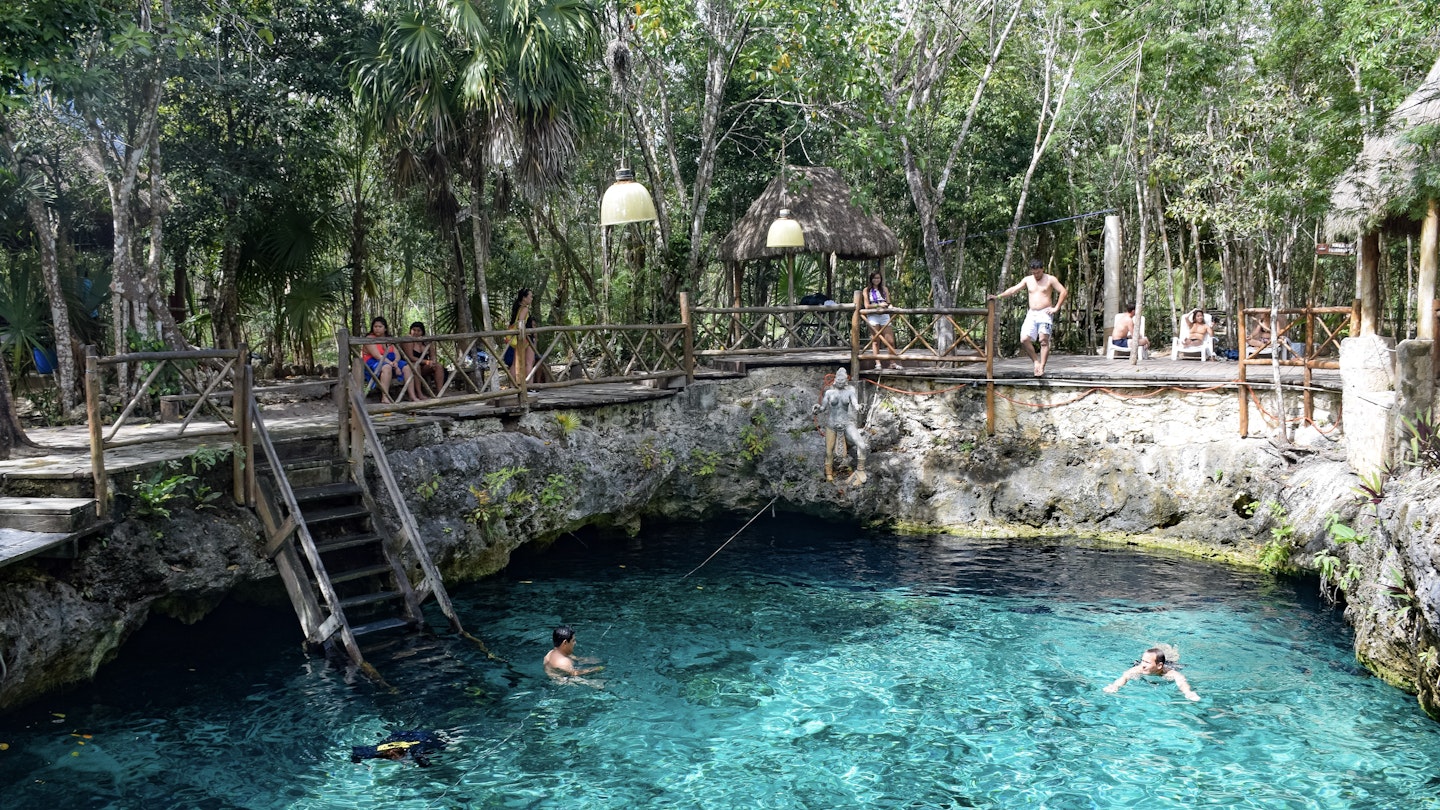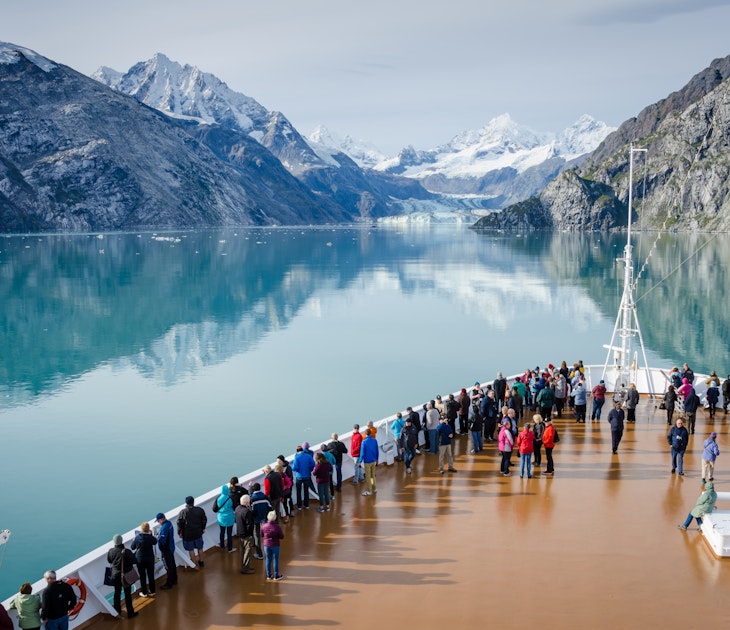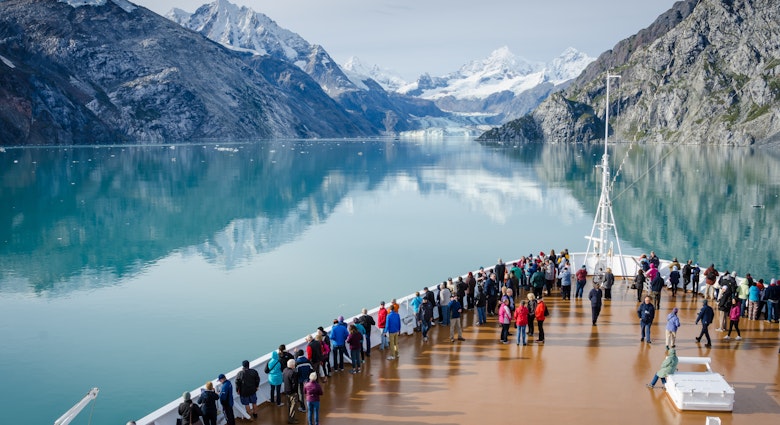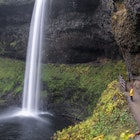Mexico’s Yucatán Peninsula has undeniably stunning beaches around Cancún, Playa Del Carmen and Tulum. But those who wish to cool off from the sun and teeny-bikini flashiness can escape to a secret underworld of turquoise pools where Mayans communicated with the gods.
At these hidden locations, you can swim in crisp mineral-rich waters in magical caves or under a jungle-framed sky and feel lost in another time. Cenotes are natural swimming holes formed by the collapse of porous limestone bedrock, which reveals a secret subterranean world of groundwater pools. The Mayans revered cenotes because they were a source of water in dry times; indeed, the name cenote means "sacred well".
Mayans settled villages around these spiritual wells and believed that they were a portal to speak with the gods. Today you can still see why cenotes held the Mayans in awe. Swimming in the pristine waters feels like stepping into prehistory, where giant tropical trees and vines form wild cathedral walls leading up to shafts of sunlight.
Most cave cenotes have fresh water that has been meticulously filtered by the earth, making them so clear and pure that you can see straight through to small fish frolicking amidst the plant life below. Underwater photographers will be thrilled with the clear waters, which allow for aquatic-playground shots in high-definition clarity. Meanwhile, open-air cenotes also have clear water, but often are home to additional vitamin- and mineral-rich algae that nourish and protect your skin if you take a dip.
Editor's note: travel restrictions may be in place during COVID-19. Always check ahead before planning any trip and follow government health advice.
Cenote Yokdzonot, near Chichén Itzá
You’d hardly know Cenote Yokdzonot was there. There is another, more famous cenote a 10-minute drive from the Mayan pyramids of Chichén Itzá, but Cenote Yokdzonot is only 10 minutes further, just enough for the crowds and tour buses to have vanished.
You'll either be the only person bathing at Yokdzonot or you’ll find just enough swimmers to share the wow moment of paddling in the fresh water, with small fish zipping below you as you gaze up at jungle vines while a hummingbird floats by.
Take time to admire the loving care with which a collective of local Mayan women (known as the Zaaz Koolen Haa, or "clear water" cooperative) tend to the Yokdzonot cenote. It is this cooperative spirit that helped create the eco-park in which it sits. As you descend into the water, note how the surrounding trails and each stone of the path was laid by hand.
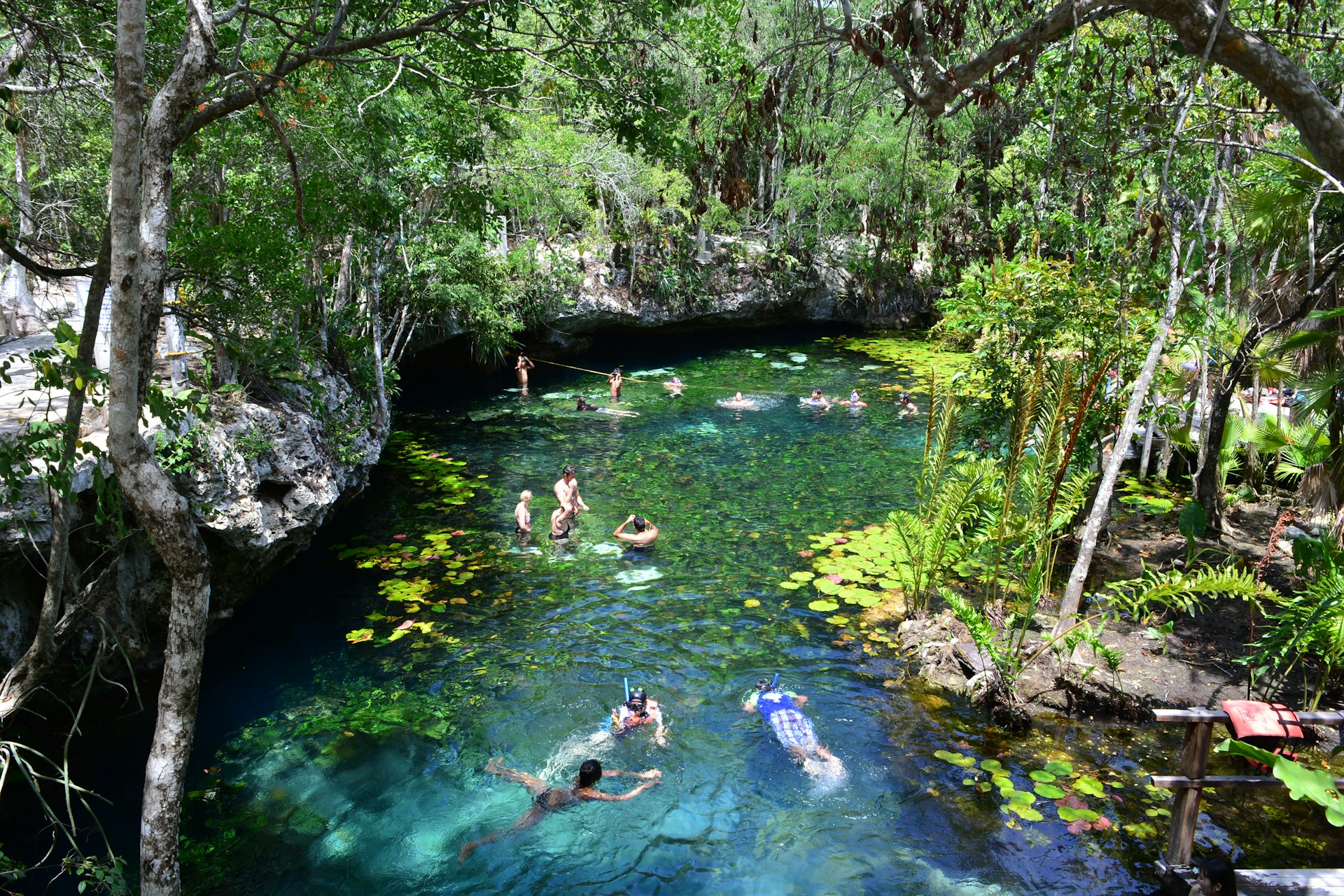
Cenote Dos Ojos, near Tulum
The name means "two eyes" and describes this cenote's two pools of water: one blue and clear, the other dark and cavernous. Both are well kept but it’s the black "eye" that gets the most attention, for its virtually light-free snorkeling.
Diving gear for rent at the cenote includes a flashlight for shining just enough light to see the stalactites as you bob up for mere centimeters of air. It’s cramped and claustrophobic down there, and spelunking or caving isn’t for everyone, but it's exhilarating to see beams of light cut through the clear waters below – a perfect companion to the cosmic pyramids of nearby Tulum.
There’s also snorkeling in the other cenote but what a contrast: there, as you look up through the crystal blue water, sunlight floods the subterranean world, your body relaxes and time trickles slowly by. At Cenote Dos Ojos you can also walk through dry caves and see bats snuggling among the stalactites. You’ll need a car, taxi, or to be part of a tour to get there.

Cenote Azul, near Tulum and Playa Del Carmen
There are no elaborate extras and no crowds at the open-air Cenote Azul, just local ambience. It has the charm of an old theme park – you know there are bigger versions with snazzier facilities, but here you get the place almost to yourself.
Peering straight through the clean turquoise water reveals the tropical fish darting below: under the surface is a mysterious blue world for divers to explore. It’s an all-ages place where kids can dive off a mini cliff into the water, and the less physically fit can wade in smaller pools, meander along paths, or make smart remarks from the sidelines while nibbling on picnic snacks.
Cheap local minivans for hire camiones will take you there from Playa Del Carmen or Tulum.
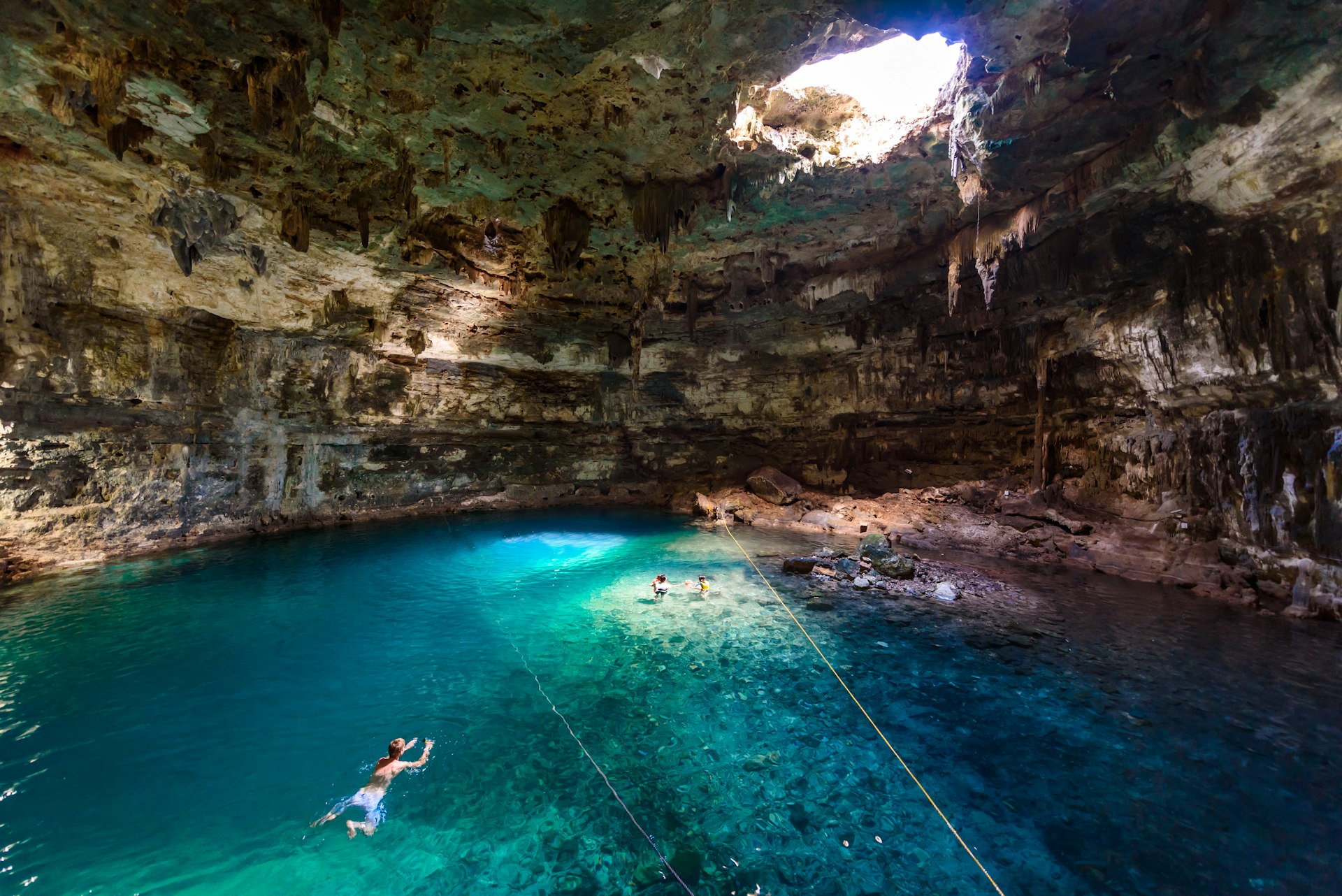
Cenote Samulá, near Valladolid and Chichén Itzá
Cenote Samulá, in the town of Dzitnup, is a photogenic celebrity, complete with colored artificial lights that gently pulsate through the enclosed cave. This creates a moody stage for the bathers in the crisp, cool waters. The star-struck moment comes when you turn your head skywards and see long tree roots spilling through a wide hole in the ceiling from far above.
Sunlight tumbles from the portal, creating a spotlight into the cave and on to the blue water. Meanwhile catfish nip away at your feet and bats flap above. You can feel small and humbled by witnessing this unlikely gathering of nature. There is a rocky path down to the cenote and the water is so clear that, once in, it’s possible to see every depth and shallow of the pool.
Cenote Ponderosa, near Playa Del Carmen
Mystery oozes from Ponderosa (also known as Jardín del Edén – "Garden of Eden"), where Mayans once sacrificed humans to their god and launched offerings of jade and gold into the cenote. What’s that sparkling under the water? Probably just shimmering fish, flitting in and out of underwater caves. Though who knows? The cenote is 15m (49 ft) deep. You can rent diving equipment and try your luck at finding ancient treasure, or at least some shell fossils.
The expansive cenote is partly covered by a rocky ceiling, as if chiselled from the side of the rainforest. You can launch yourself from the rocky ledge (be careful not to leap into the shallows) and swim out to the sunny freshwater pond for snorkeling. The cenote lies at the bottom of a valley of trees that hold in humidity. It can make you heady and imagine that not much has changed since the ancient Mayans were communicating with their god, with the heavens reflected on the water’s surface.

Grutas de Loltún, near Chichén Itzá and Tulúm
You don’t have to miss out on seeing the Mayan underground wonderland because you hate tight spaces or don’t fancy swimming. Grutas (caves) showcase cenote views without you having to get wet. The Grutas de Loltún, for example, are the largest caves in the Yucatán Peninsula and offer a spectacular path through Mexico’s inner world of monumental ceilings.
Guides lead you through a network of caverns decked out in hand drawings thousands of years old, tree roots that burst through the ceiling in an explosion of sunlight, and stalagmites and stalactites that have joined to form columns that can be thumped to "sing" the caves' name, "Lol" and "Tun".

What to bring for a Yucután cenote adventure
Bring swimwear, water, sandals/flip flops and a towel, and leave valuables at home. Also make sure to pack reef-safe sunscreen, as the environment inside the cenotes is extremely fragile. Entrance fees are around 200 pesos (USD$10) per person. These cenotes all have changing facilities, plus flashlights, life vests and snorkeling equipment for hire. Some will even rent you bicycles to explore the surrounding area. And because this is Mexico, you can count on finding taxis and snacks nearby.
Article last updated in December 2020.
You might also like:
Getting to know Chichén Itzá, the heart of the Maya Empire in Mexico
Mexico's best off-the-grid-beaches
Where to cool off with an unforgettable wild swim

